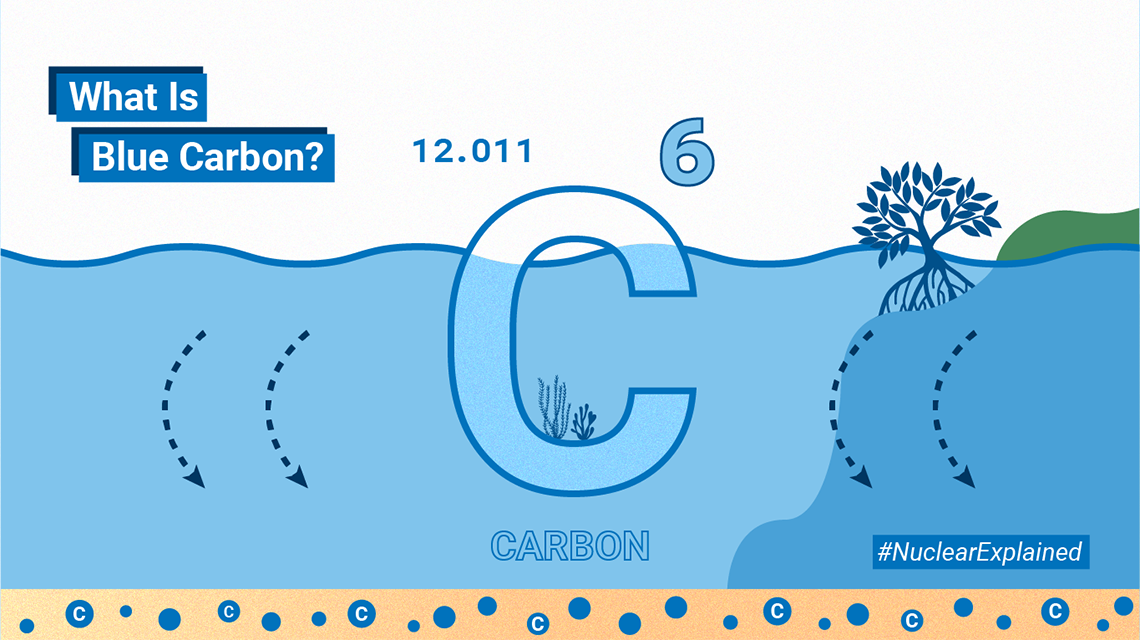Understanding the Role of Sediment in Coastal Ecosystems
Sediment plays a crucial role in coastal ecosystems such as seagrasses, mangroves, and marshes. By studying sediment, scientists can gather valuable insights into environmental changes over various timelines, ranging from recent years to millions of years ago. This understanding is essential for monitoring climate change and developing strategies to mitigate its effects. One of the critical functions of these vegetated coastal ecosystems is their ability to capture and store carbon in their sediments, a process known as carbon sequestration. This ability can be evaluated using advanced nuclear and isotopic techniques.
How Sediment Analysis Helps
The International Atomic Energy Agency (IAEA) Marine Environment Laboratories, based in Monaco, employ specific methodologies to analyze organic carbon accumulation rates in marine sediments. The process begins with collecting sediment core samples from vegetated coastal areas. These samples are obtained using long plastic tubes designed to preserve the natural layering of sediments over time. This layering provides a historical record, much like the rings of a tree, which researchers can analyze to understand past environmental conditions.
Techniques Used for Sediment Analysis
To determine how quickly sediments accumulate, scientists utilize naturally occurring isotopes such as lead-210 (210Pb) and artificial radionuclides like caesium-137 (137Cs). These isotopes are crucial for calculating sedimentation rates over decades, up to about 100 years. The significance of this period lies in its correspondence with the timeline of increased human-induced environmental impacts.
The process involves radiochemical separation and the use of alpha and gamma spectrometry tailored for each isotope. Additionally, mass spectrometry is used to measure the organic carbon content and its isotopes throughout the sedimentary record. This comprehensive approach allows researchers to assess organic carbon stocks and burial rates accurately.
The Importance of Radiochemical and Mass Spectrometry Techniques
Radiochemical techniques involve separating radioactive isotopes from a sample to measure their concentration. These methods are critical for identifying specific isotopes like lead-210 and caesium-137, which help determine the age of sediment layers. Alpha and gamma spectrometry are two types of radiation detection used to measure these isotopes. Alpha spectrometry involves detecting alpha particles emitted by radioactive substances, while gamma spectrometry measures gamma rays.
Mass spectrometry, on the other hand, is a technique used to identify the amount and type of chemicals present in a sample. It is particularly useful in measuring the organic carbon content in sediment layers. By combining these techniques, scientists can build a comprehensive picture of how much carbon is stored in coastal sediments and how quickly it accumulates.
Why This Research Matters
Understanding sediment accumulation and carbon sequestration in coastal ecosystems is vital for several reasons. Firstly, it helps scientists track historical climate patterns and predict future changes. By knowing how much carbon is stored in these ecosystems, we can better evaluate their role in the global carbon cycle. This information is crucial for developing strategies to combat climate change.
Secondly, the research provides insights into how human activities have impacted the environment over the last century. This understanding can guide policymakers and environmentalists in creating effective conservation and restoration strategies for coastal regions.
Additional Insights and Global Reactions
The study of sediments and their carbon storage capabilities is gaining attention worldwide. Many countries are investing in similar research to understand better their local ecosystems and the impact of human activities on their environments. Efforts are being made to protect and restore vegetated coastal ecosystems, recognizing their importance in mitigating climate change.
For instance, countries with extensive coastlines, like Australia and Brazil, have initiated programs to conserve mangroves and seagrasses. These ecosystems not only serve as carbon sinks but also provide crucial habitats for marine life, protect coastlines from erosion, and support local fisheries.
Conclusion
In conclusion, the analysis of sediments in vegetated coastal ecosystems offers vital insights into environmental changes and carbon sequestration. The techniques used by the IAEA Marine Environment Laboratories in Monaco, including radiochemical and mass spectrometry methods, provide a robust framework for understanding these processes. As global awareness of climate change grows, this research becomes increasingly important in guiding conservation efforts and informing policy decisions. By prioritizing the preservation and restoration of coastal ecosystems, we can better harness their natural ability to combat climate change and protect our planet for future generations.
For more Information, Refer to this article.

































![Good Lock Features: Discover the Top Favorites [Exploring Good Lock ②] Unveiling the Most Popular Good Lock Features](https://www.hawkdive.com/media/samsung-mobile-good-lock-home-up-3-most-popular-features_thumb728-218x150.gif)
